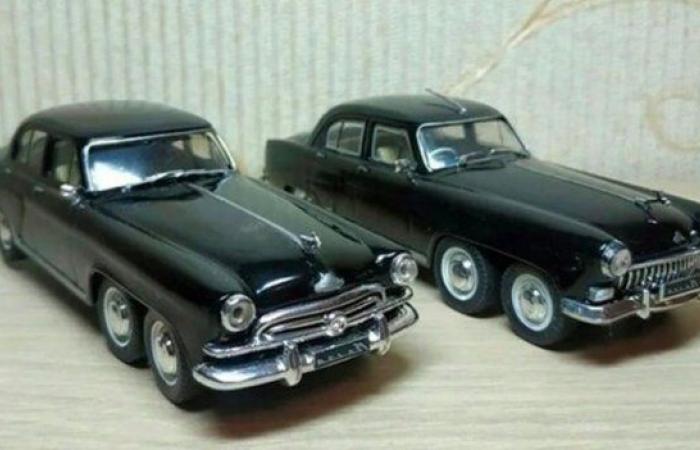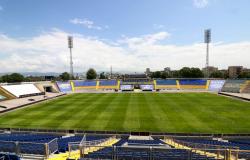The secret project is proving difficult to implement
Russian scientists do not stop working on the creation of modern engines
Until the Chernobyl accident, the development of the Soviet nuclear power industry was proceeding at an unstoppable pace. However, Soviet nuclear scientists had to abandon many ambitious projects. According to one of the versions, such was the fate of a six-wheeled car with a nuclear engine in the 1960s.
A foreign concept
This is what the Ford Nucleon mockup looks like.
At the dawn of nuclear power, scientists and designers around the world were inspired by the seemingly limitless prospects for the use of nuclear reactors, the dangers of which few thought at the time. If reactors can be put on icebreakers and submarines, then why not on other vehicles? This is roughly the reasoning of the designers who presented the ideas of nuclear carriers (mega trains), nuclear planes and even nuclear tanks. But the concept of an atomic car, presented for the first time in the United States, seems most improbable.
In 1958, the Ford company, known for inventing the conveyor belt, made a model of the Ford Nucleon nuclear car. It looks extremely futuristic, but the most unusual thing is not its appearance, but the alleged source of energy – a very compact nuclear reactor. Things don’t go further than a scale model and its conceptual description, but the Ford Nucleon becomes a kind of symbol of the atomic age. The ordinary American family is offered a car, the wheels of which must be driven by a uranium reactor, a steam generator and two steam turbines. However, no one has come up with a way to solve the main problem – to reduce the standard underwater S2W reactor to household size. Ford Nucleon remains only a museum exhibit.
Russian development
Soviet inventive thought lagged behind American until, in 1958, the second secretary of the Soviet embassy in Washington saw a Ford Nucleon at an industrial exhibition. According to a number of sources, with the light hand of Nikita Khrushchev, the development of the Soviet analogue of the atomic machine began. This is done by the secret Automobile Design Bureau, headed by physicist Alexander Kamnev. It was he who designed the main element of the car – a working nuclear power plant. At first, Kamnev decided to follow the same path as the Americans – to take a working nuclear reactor (the same as the atomic ship “Lenin”) and reduce it to acceptable sizes. When it turns out that this is not possible, Kamnev proposes a different, fundamentally new engine design. Built in 1965, the Volga-atom prototype had an engine power of 320 hp. Tests in Severomorsk show that the car overheats and runs slowly.
Initially, it was planned to make several experimental cars to demonstrate at exhibitions and drive guests of honor. However, while the designers were developing the engine and the car itself, the situation was changing. Khrushchev resigns as General Secretary, and Brezhnev, who replaces him, has no similar ambitions. So the project was terminated without much fanfare. Both test cars (minus the engines that were removed for decommissioning) sat in the depot for a long time and were then scrapped.
However, there is not enough documentary evidence for everything described above. The “four-cylinder engine using washers made of enriched uranium 235 isotope” described by some authors is frankly fantastic, so we are most likely talking about an obvious myth. The automobile industry of the USSR never belonged to the advanced industries, being mainly concerned with copying Western (and not the most modern) models. In addition, it is no secret that many developments of nuclear scientists (for example, rockets with nuclear engines) are funded with the knowledge of the Department of Defense. The atomic car could have no military applications.
After all, the nuclear reactor has been put on wheels in the Soviet Union. Scientists are developing and testing chain nuclear power plants TES-3 and Pamir-630D – mobile units designed to generate electricity in hard-to-reach areas, for example, in the north. Mobile nuclear power plants have a different fate. Customers abandoned the first model in 1969 due to economic inefficiencies, while the second model proved “out of place” after Chernobyl and was eliminated.
Future reality
Currently, inventors are returning to the idea of an atomic car. In 2009, engineer Lawrence Kulesus presented the Cadillac World Thorium Fuel concept car to the public. This model was developed as a machine capable of working for 100 years without charging or repair. A new type of nuclear reactor uses thorium, a radioactive metal, 1 gram of which provides as much energy as 30,000 liters of gasoline. By the way, there are very large deposits of thorium in Russia, so in the 21st century the country still has a chance to conquer the nuclear car market. If, of course, ordinary drivers overcome the fear of the “atomic bomb on wheels”.






